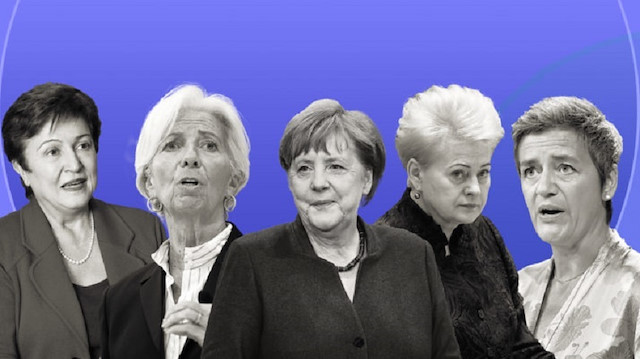
Female candidates for big Brussels jobs include Denmark's Margrethe Vestager, now the bloc's top competition official, the Bulgarian head of the World Bank, Kristalina Georgieva, and Spanish Economy Minister Nadia Calvino.
Nathalie Loiseau, a former French EU minister, Czech Justice Commissioner Vera Jourova and Lithuania's outgoing President Dalia Grybauskaite are in the race. Madrid could also propose Environment Minister Teresa Rivera.
But the leadership of the EU reflects domestic politics in the bloc, still overwhelmingly dominated by men. National EU capitals nominate each of the 28 commissioners, and in the outgoing Commission, only nine are women.
"Historically, women were not prioritised," said Virginija Langbakk, director of the European Institute for Gender Equality, an EU agency. "It's the... boys' agreement, because the majority of party leaders are still men."
Of the 28 leaders of EU states, just four are women, though one, Angela Merkel, is the most powerful of all. A potential fifth won an election this week in Denmark, but the other three, including Britain's Theresa May, are already on the way out.
The gap is particularly glaring at the European Central Bank. Just two women sit on its 25-member governing council. One, Sharon Donnery, acting head of the Irish central bank, is due to step down on Sept. 1 and will be replaced by a man.
Of the major EU institutions, the one that comes closest to gender parity is the European Parliament, which named its first female president, France's Simone Veil, in 1979. Forty years on, an estimated 40% of lawmakers elected in last month's European election are women, up from 36% in the outgoing assembly.
Back at home in member states, female lawmakers make up more than 40% of the parliaments of Belgium, Sweden and Finland, but only just over 10% in Hungary and Malta.
EU institutions are not only more male than the electorate, they are whiter too. Minorities make up a tenth of the EU population but just 5% of incoming European lawmakers, says Sarah Chander of the European Network Against Racism group.
"There is some improvement," she said. "We're still very far from a true representation of the European population."
With so much else at stake in the negotiations to fill the top jobs, fixing the gender gap is going to be just one factor.
"It's absolutely something they are going to try, it's in everyone's interest," said a senior - male - government official dealing with EU affairs for one member state. "It's important but it must be doable. It's not going to be a do-or-die thing."














